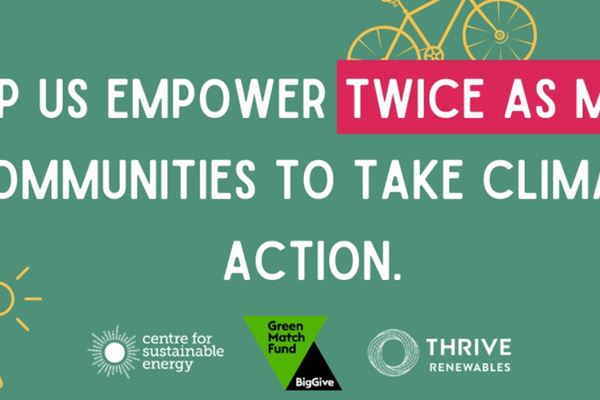Onshore wind is one of the cheapest, cleanest and quickest energy technologies to deploy, so we really believe the government should be capitalising on its potential. According to the government’s renewable energy planning database, 1,852 MW of onshore wind was submitted for planning in the UK this year – with only 10.25 MW of this proposed for England. Clearly, outdated planning policy is stopping the development of new onshore wind farms that could accelerate net zero, build our energy security and lower bills for households across the country.
While it’s positive to see the topic of onshore wind back on the agenda, it’s still unclear what the proposed consultation really means for the development of new projects. Below we unpack the available detail and why we think backing onshore wind is one of the best solutions to the energy crisis.
WHAT’S BEEN HAPPENING WITH ONSHORE WIND UP UNTIL NOW?
In addition to removing all financial support for onshore renewables, in 2015 the Government placed a de facto ban on new onshore wind development in England through changes to its National Planning Policy Framework (NPPF). It meant that developers could only build on land that was specifically identified for onshore wind in the council’s local plan. As plans are revisited every 20 years, many local plans do not acknowledge renewable energy let alone have land allocated for the development of new renewable projects. This means that over the seven years since 2015 only five new projects with a capacity of 24MW have made it through the planning process and been successfully constructed in England.
In contrast, there is strong support for onshore wind by members of the public. The Government’s latest survey of public attitudes towards renewables and tackling climate change shows that 88% of people support using renewable energy, with 79% of people supporting onshore wind and only 4% opposing it.
The issues surrounding onshore wind development were raised once again in Kwasi Kwarteng’s mini budget in October. It was suggested that the government planned to move planning regulation for onshore wind ‘in line with other infrastructure projects’ – something that we have been calling for since 2015. Following Kwasi’s resignation, however, the new chancellor Jeremy Hunt reversed almost all the proposals made by his predecessor and it was left unclear what would happen with onshore wind.
WHAT DOES THE NEW CONSULTATION MEAN?
The government recently confirmed a consultation into onshore wind in England, looking at how it can ensure that new onshore wind projects are built in areas where there is local support. This comes after a group of Conservative MPs showed significant support for an amendment to the Levelling Up and Regeneration bill that would have removed the block.
While the consultation is a positive step, this does not mean that the ban will be lifted completely and there’s still a lack of clarity about what ‘local support’ means and how it will need to be demonstrated. The current proposals state that ‘planning permission would be dependent on a project being able to demonstrate local support and satisfactorily address any impacts identified by the local community’. It also adds that ‘Local authorities would have to demonstrate their support for certain areas as being suitable for onshore wind, moving away from rigid requirements for sites to be designated in local plans’. According to the government’s website, the technical consultation on changes to the NPPF will be launched by Christmas and concluded by the end of April 2023.
WE WANT TO SEE A LEVEL PLAYING FIELD
We believe to put the UK in the strongest position possible, the government should still be looking to align the planning policy for onshore wind with other infrastructure projects; with the ‘standard’ planning process taking into consideration the local community, ecology and land use. Doing so could be a milestone for the responsible development of further onshore renewables and we already know that this would bring significant economic benefits.
In fact, RUK’s onshore wind prospectus concluded that, if we double onshore wind capacity to 30GW by 2030, it would reduce consumer bills by £16.3 billion over the course of the decade, generate £45 billion of economic activity and create 27,000 full-time jobs in the UK’s onshore wind industry. Quite simply, the longer we stall on new onshore wind development in England, the more money households lose and the further away we get from net zero.



